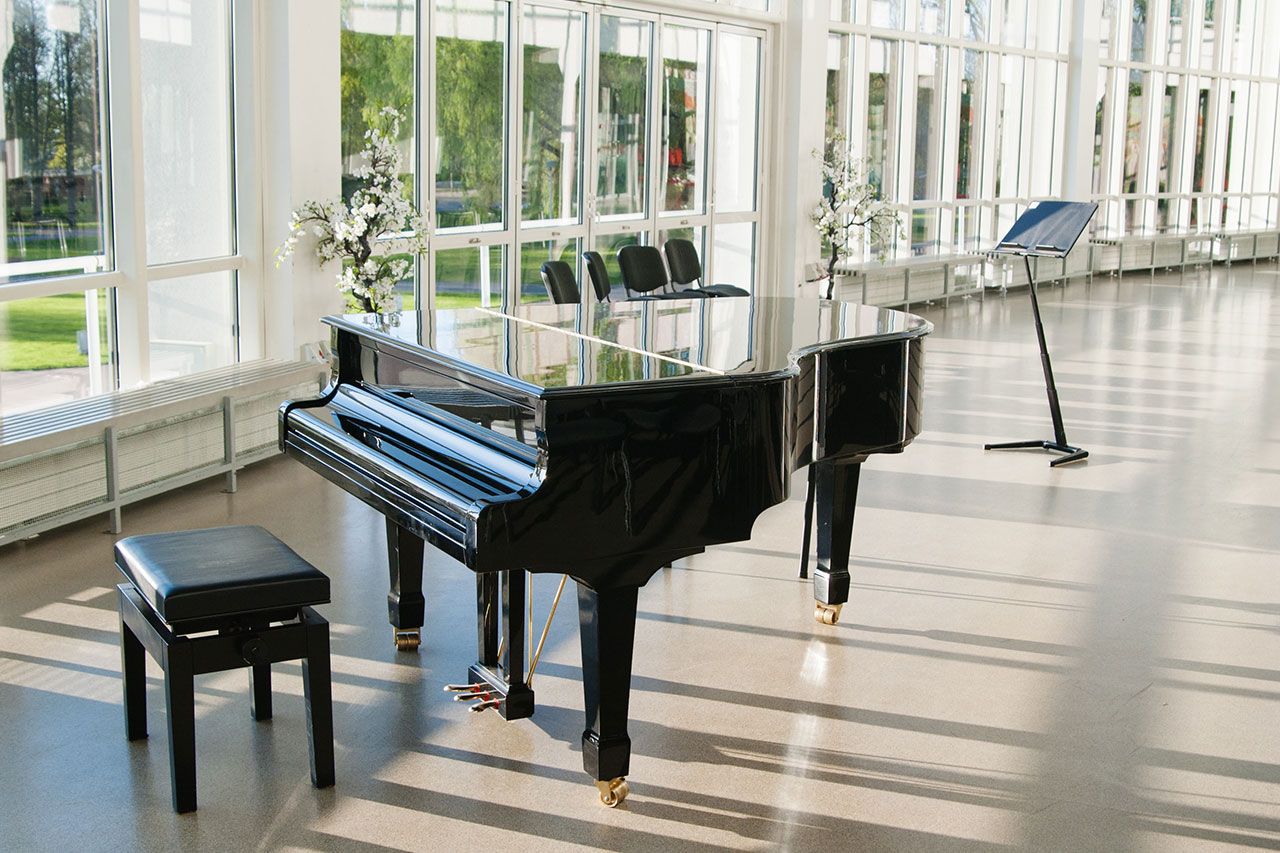The road to the invention of the piano featured the arrival of various instruments, such as the Hydraulis, an organ-type instrument thought to be the first with a keyboard. The Hydraulis was created in Greece around 220 BC. Early keyboards were played not only with the hands but the fists, wrists, feet and knees too. In the 14th and 15th centuries, a number of keyboard stringed instruments came into use. Some of these instruments, such as the clavichord used hammers, whilst the harpsichord was plucked.
The first piano was invented by the Italian harpsichord maker Bartolomeo Cristofori. He built the instrument sometime between 1698 and 1700, though the exact date has never been confirmed. On this piano, the accidental keys were white, whilst the naturals were black. Sebastian LeBlanc suggested that the colours be switched. There are three remaining Cristofori pianos in existence today, and these date from the 1720s. When Cristofori invented the piano, the most commonly-played instruments were the clavichord and harpsichord. Whilst these did resemble the modern piano, the sound was produced differently. In harpsichords, strings were plucked by quills, whilst clavichord strings were struck by tangents.
One frustrating aspect of harpsichords was that there was no way of controlling how loud or soft the sounds produced were. This meant that there were no dynamics involved and composers were limited as to the range of emotion they could convey. Clavichords were more efficient in this respect thanks to the way that strings could continue to vibrate whilst the key was depressed, offering better volume control. Nonetheless, the general tone of the instrument remained too delicate, which meant it was unsuitable for environments like vast concert halls as it would be rendered inaudible by other instruments. It’s often thought that the piano to offer the perfect balance between the harpsichords loudness and the control provided by the clavichord.
Cristofori ensured hammers could strike keys without staying in contact with them. His design also mean notes could be swiftly repeated and hammers could revert to their rest positions without landing too abruptly. The instrument eventually became known as the pianoforte, though was still referred to as a harpsichord for many years. The invention was still something of an industry secret until it featured in an article by the writer Scipione Maffei. Many builders started work on their own pianos after reading the article. The builder Gottfried Silbermann added an additional feature to the instrument; an early version of what we now know as a damper pedal.
Bach was initially disappointed by the piano when he first encountered it, apparently taking an axe to it. However, he approved of a new piano he was introduced to in 1747 and helped it win attention from a string of noted European composers. Soon, knowledge of the instrument spread to British colonies in the US. Soon after, the piano found its way into homes of various aristocrats and royal families. The piano evolved hugely in the towards the end of the 18th century, which designers coming up with pioneering solutions to make pianos more powerful, boosting their volume and lightening their mechanisms. Before long, the piano started to appear in public on a frequent basis.
The piano dramatically rose in popularity during the Romantic era, with leading players including the iconic Franz Liszt. The instrument continued to evolve as did the skills of piano players, who as a whole became increasingly more diverse, with many developing their own unique styles. The touch of the keys was improved, and costs of pianos for the home were reduced substantially, enabling the instrument to find its way into a host of middle-class homes, particularly in North America. Growing numbers of women learned to play the piano, with many generating extra cash by offering piano lessons. The piano started to play a pivotal role in working-class life in the 1920s, with many African Americans working their way around the instrument. A great deal of 20th-century pop and rock was built around the piano, with the instrument also kickstarting innovative musical movements such as jazz and ragtime. The enduring popularity of the piano shows no signs of heading into decline, even after three centuries.

